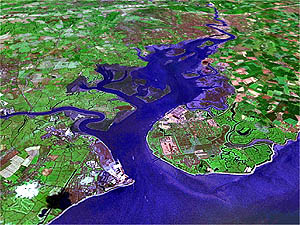Difference between revisions of "Bioremediation of waste"
| Line 1: | Line 1: | ||
{{Incomplete}} | {{Incomplete}} | ||
[[Image:Uses5.jpg|thumb|left]] | [[Image:Uses5.jpg|thumb|left]] | ||
| − | + | <p> A significant amount of human waste settles on the seafloor, through wash off from land and through transport from rivers and estuaries. Waste settling on the seabed is stored, assimilated, diluted and recycled through chemical re-composition, these [[bioremediation]] processes which de-toxify and purify waste and are of critical importance to the marine environment. Through either direct or indirect activity, marine living organisms store, bury and transform | |
| − | activity, marine living organisms store, bury and transform | ||
many waste materials through assimilation and chemical de | many waste materials through assimilation and chemical de | ||
and re-composition. For example, the bioturbation activity | and re-composition. For example, the bioturbation activity | ||
Revision as of 16:44, 8 January 2009

|
A significant amount of human waste settles on the seafloor, through wash off from land and through transport from rivers and estuaries. Waste settling on the seabed is stored, assimilated, diluted and recycled through chemical re-composition, these bioremediation processes which de-toxify and purify waste and are of critical importance to the marine environment. Through either direct or indirect activity, marine living organisms store, bury and transform many waste materials through assimilation and chemical de and re-composition. For example, the bioturbation activity (reworking and mixing of sediments) of mega- and macrofaunal organisms within the seabed can bury, sequester and process waste material through assimilation and/or chemical alteration. Marine organisms such as the polychaete worm, Nereis succinea, takes heavy metals through feeding on sediments.
These detoxification and purification process are of critical importance to the health of the marine environment[1].
References
- ↑ Beaumont, N.J.; Austen, M.C.; Atkins, J.P.; Burdon, D.; Degraer, S.; Dentinho, T.P.; Derous, S.; Holm, P.; Horton, T.; van Ierland, E.; Marboe, A.H.; Starkey, D.J.; Townsend, M.; Zarzycki, T. (2007). Identification, definition and quantification of goods and services provided by marine biodiversity: implications for the ecosystem approach. Mar. Pollut. Bull. 54(3): 253-265
